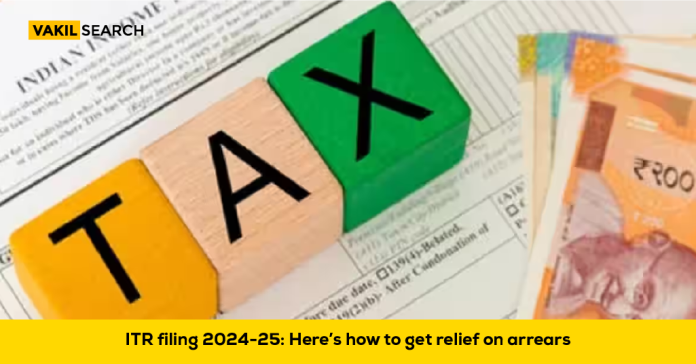Receiving arrears can be both a relief and a headache during tax season. While they represent overdue earnings like salary, pension, or rent from previous years, they complicate your income tax return (ITR) filing.
These overdue payments, when received, are added to your current year’s income. This can push you into a higher tax bracket, increasing your tax liability.
For example, receiving salary arrears in 2023 for work done in 2022 might result in a higher tax rate on these arrears, adding to your tax burden.
Fortunately, Section 89(1) of the Income Tax Act, 1961, offers a solution. ‘To get relief on arrears in ITR filing, one can take relief as per Section 89(1) of the Income Tax Act 1961, which provides relief and helps reduce the tax burden due to arrears received from salary, pension, etc., for past years. Form 10E is essential to file for claiming relief under Section 89 for arrears,’ says CA Amit Bansal, Partner – Direct Tax, Singhania & Co.
Understanding Section 89(1)
Section 89(1) is a lifesaver for taxpayers whose tax liability increases due to arrears. It allows you to calculate the tax as if you received the arrears in the year they were due, rather than the year you actually received them, reducing the tax burden.
Claiming Relief under Section 89(1)
To claim this relief, you must file Form 10E online before submitting your ITR. This form acts as your key to tax savings. By doing so, your tax rate reflects your average income over the relevant years, making it fairer.
Aditya Chopra, Managing Partner at Victoriam Legalis – Advocates & Solicitors, explains, ‘In order to claim such relief, an assessee is required to file Form 10E. The said form may be filed online by assessees to claim relief in respect of arrears of salary, family pension in arrears, advance salary, gratuity, commuted pension or compensation on termination of employment, as the case may be.’
Form 10E: Your Ticket to Tax Relief
Form 10E is crucial for claiming relief under Section 89. You can submit it via the e-filing portal before filing your Income Tax Return. If you receive an intimation under Section 143(1) after your ITR processing, check if the IT department has accepted your claimed relief.
In summary, understanding and utilising Section 89(1) and Form 10E can significantly ease your tax burden when dealing with arrears. Make sure to follow the necessary steps to benefit from this provision and avoid paying more tax than necessary.



